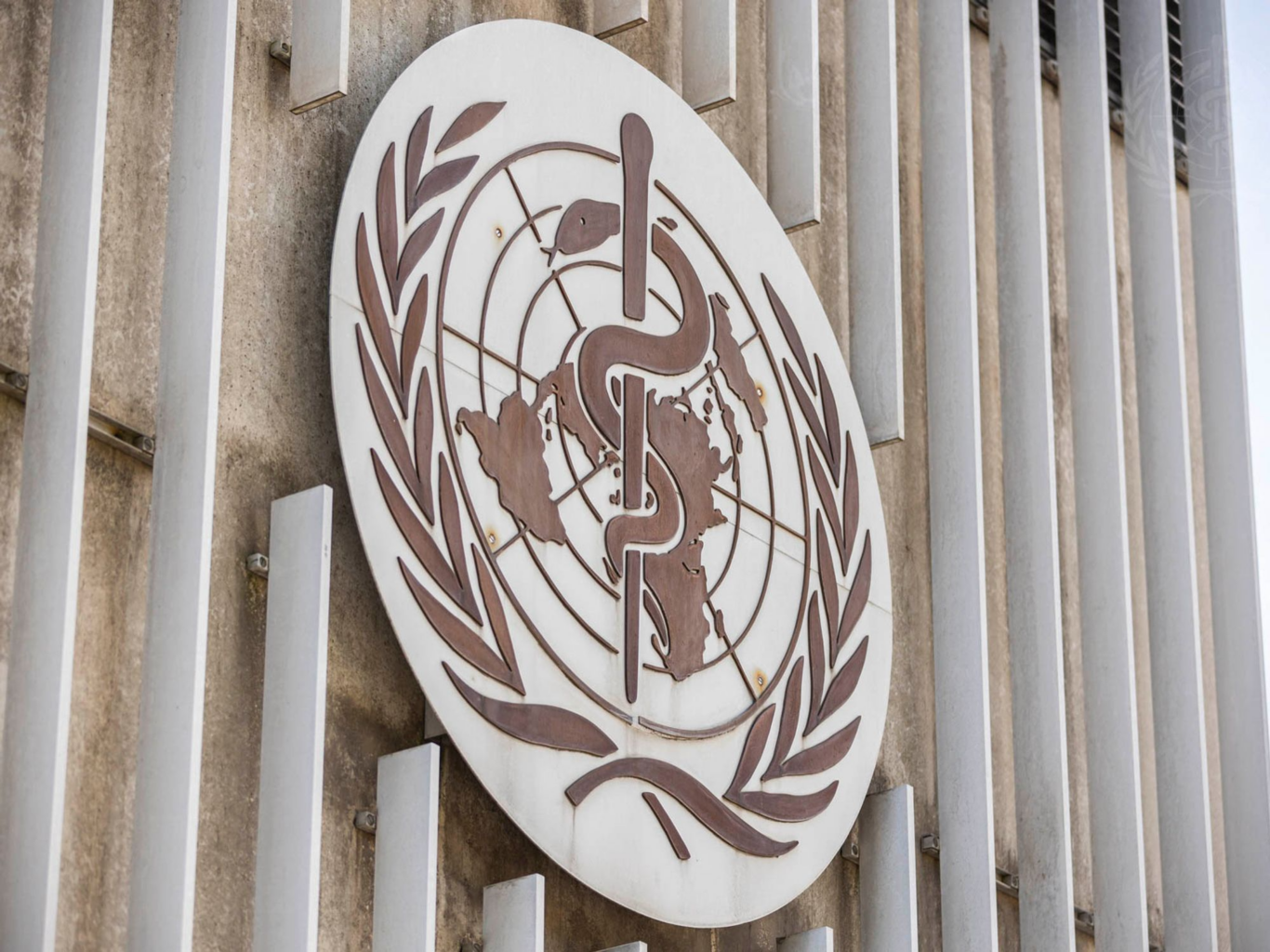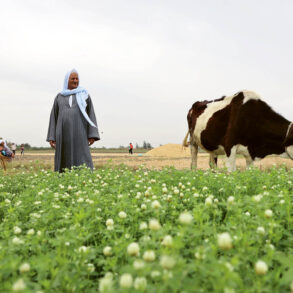The coronavirus pandemic brought about an unusual and, for many, uncomfortable combination of two very different aspects of life: medicine and politics. Coming out of that experience now, we see a broad push to unify policy and standardize treatment protocols, and at the same time, efforts to promote and defend individual medical decision-making. How can the field of medicine balance these two, and what should the role of anthroposophic medicine be within that dynamic?
This year marks one hundred years since Steiner shared the seeds for many anthroposophic activities in the world through courses for young doctors, eurythmists, farmers, curative educators, and priests (among others). We are also at a time when many people are asking about the orientation needed for these anthroposophic activities as they begin their next century. This is a natural part of the hundred-year cycle, but it is being strongly influenced by the cultural questions of our day. These include negotiations within the World Health Organization (WHO) around a proposed pandemic agreement (also referred to as the pandemic treaty). The goal of this article is to provide some context and an overview of the process to help each of us find better orientation and understanding.
Although work on the pandemic agreement has garnered much attention, there are actually two important parallel processes happening within the WHO:
- Negotiations on the WHO Pandemic Agreement, which began in 2022. A new draft of the agreement was released in early March 2024 and serves as the basis for this article.
- Less visible are negotiations on a revision of the International Health Regulations (IHR). These negotiations are ongoing, and while they can be watched online, there are no draft documents currently available for review. The last available document is the 3rd revision, which was done in 2005. The revision of the IHR is complex because sixteen countries submitted more than 300 proposals for amendments to the IHR.1 Those amendments cover a variety of subjects and sometimes go in opposite directions. A WHO Review Committee conducted a detailed analysis of the proposed amendments.2
Both processes are working to prepare proposals that will be voted on during the World Health Assembly in May. The next and last meeting for both of these, before the World Health Assembly, will be April 22-26, 2024.
The Pandemic Agreement Draft
Here, we offer some overview and assessment, but we encourage each person to look at the text of the pandemic agreement for themselves.3
A central focus for the pandemic agreement is seeing how countries can share pathogen data (e.g., viral samples) and other related resources in a more equitable way. This was prompted by the fact that during COVID-19, richer countries bought up nearly all the vaccines for themselves and resisted requests to let poorer countries produce their own, cheaper versions of medicines and vaccines. This dynamic is influenced by the fact that when there is a new disease, industry and richer countries want quick access to the pathogen and its genetic material so that they can start developing diagnostics, medicines, and vaccines. On the other hand, developing countries want guarantees of access to the same diagnostic and therapeutic options. These considerations stand behind one of the central goals of the pandemic agreement: “underscoring the importance of promoting the early, safe, transparent, and rapid sharing of samples and genetic sequence data of pathogens with pandemic potential, as well as the fair and equitable sharing of benefits arising therefrom” (page 2). While international collaboration on this process has been a driving force in negotiations, the obligation on rich countries and industry to share resources and technologies has been greatly watered down. Articles 9–13 of the agreement most specifically address these aspects.
One striking aspect of the current draft, compared to the one released in October 2023, is how the language has become more open and less binding but also less specific. Examples include phrases like: “taking into account its national circumstances and capacities,” “within means and resources at their disposal” (Article 6), or “collaborate, where appropriate” (Article 7). This can be looked at in different ways. On the one hand, national sovereignty is preserved. On the other hand, what countries decide to do and how they may interpret certain guidelines or policies, seems open and unpredictable.
What Else Is Significant in the Agreement?
Two other changes in the new draft are of interest. Previously, a definition for “pandemic” as well as for a new term, “infodemic,” were included in the “Use of Terms” section (pages 3–4.) The removal of a definition for pandemic may relate to this shift towards more open language. At the same time, while an exact definition of pandemic might be strongly disputed by different groups, the absence of a specific definition leaves room for interpretation. The term “infodemic,” defined as “too much information, false or misleading information… that causes confusion and risk-taking behaviours that can harm health,” has also been taken out. Its removal seems a positive sign from the perspective of open and free communication about health. That element is not completely gone, however, as is discussed below in relation to Article 18.
Regarding concerns that the WHO will receive additional powers through this agreement process: that does not seem to be present in the draft text. Specific measures about giving additional powers for lockdowns or compulsory vaccines are also not covered in the pandemic agreement. What is important is to recognize is that health measures are covered in the IHR, so the revision of the IHR has to be watched instead. As stated above, no draft of the IHR revision is publicly available at this time.4
There have also been questions and concerns about how the pandemic agreement might infringe on the sovereignty of countries. This is addressed only in that rich countries will need to support poorer countries, but this aspect of the agreement has become very weak. It is related to the provision of vaccines and other pandemic-related materials.
As for fears that the pandemic agreement will infringe on the rights of citizens: once again, health measures are dealt with in the IHR, not the pandemic agreement. We point this out because it is important that, as materials are developed and become available, we make sure we are accurately informed and, importantly, that we are directing our energies and gaze toward the right places.

Attention Needed for Anthroposophical Medicine and Complementary Therapies
It will be especially important for anthroposophical medicine (AM) and other traditional and complementary therapies (TCI) to keep a close eye on the pandemic agreement. It is clear within the document that the assumed model of pandemic response is broad vaccination. Decisions about vaccination administration, including possible requirements, are left for countries to decide on a national level. But the fact that, in the agreement, countries maintain their sovereignty does not necessarily mean that countries will respect the rights of their citizens. This points to the fact that advocacy for individual decision-making, especially around compulsory vaccines, also needs to be done on a national (country) level.
Another area that could require ongoing attention is Article 18, which speaks about “communication and public awareness.” This passage, too, has become softer and more open:
- “Each Party shall promote timely access to credible and evidence-based information on pandemics and their causes, effects, and drivers, with the aim of countering and addressing misinformation or disinformation, particularly through risk communication and effective community-level engagement.
- The Parties shall, as appropriate, promote and/or conduct research and inform policies on factors that hinder or strengthen adherence to public health and social measures in a pandemic, as well as trust in science and public health institutions and agencies.
- The Parties shall promote and apply science- and evidence-based approaches to effective and timely risk assessment, and culturally appropriate public communications.
- 4. The Parties shall exchange information and cooperate, in accordance with national law, in preventing misinformation and disinformation, and endeavour to develop best practices to increase the accuracy and reliability of crisis communications.”
What constitutes “misinformation” can vary greatly and is often a matter of personal perspective, experience, and even motivation. Living in the age of digital and social media may make these aspects still more confusing. Yet, even with that understanding, the recommendations in Article 18 could be particularly challenging for anthroposophic medicine (AM) and other traditional, complementary or integrative (TCI) medical approaches, which may not fit a standard view of science or research. Medical perspectives which extend or differ from broad views could then be criticized or suppressed. As the last years have shown, those kinds of attacks are becoming more frequent and often targeted at anthroposophic medicine. Finding ways to openly and clearly communicate anthroposophic perspectives will be an ongoing need.
Putting the Pandemic Agreement in Context
Two years of negotiations will soon draw to a close, and both the Pandemic Agreement and suggested IHR revisions will be sent to the World Health Assembly for a vote. Article 18 of the Pandemic Agreement prompts us to really think about what defines free expression and communication (particularly if one’s view are categorized as misinformation), especially as it relates to the free spiritual life.
Other feared provisions regarding new mandates, new powers, or loss of national sovereignty are not found in the current draft. The real impact of these overall negotiations, however, will not fully be known until the proposed IHR revisions are made public. We will continue to monitor the process.
Orienting Ourselves, From the Micro to the Macro Level
The confrontation between medical practice and political policy is unlikely to end anytime soon. This means we will continue to face complexity. It means we must develop the capacities to observe, communicate, and act on multiple levels. We must practice addressing issues on individual, community, country, and international levels.
On the individual level, the possibility for each person to find their own understanding and to then decide on what is best for their unique situation and destiny path stands as an essential part of anthroposophic free spiritual life. Anthroposophic medicine and the Medical Section will always work to support this.
On the community level, it means that we must cultivate practices for conversation (and other types of communication) which inform and support many individuals. We must understand and appreciate that there will be a broad range of views and experiences, even within our anthroposophic movement. We must honor that diversity, just as we honor 12 different views of a tree. We need to stay in conversation.
On the national level, there are many quickly changing political landscapes. Recent proposals to remove reimbursement for homeopathic and anthroposophic medicines in Germany are certainly evidence of this. Challenges are similarly growing in other countries. Citizens’ petitions, grassroots initiatives, and professional advocacy are becoming more important. We see that the needs and priorities of different countries are also increasingly complex, as some countries are experiencing a wonderful growth of anthroposophic medicine, while others are so continually attacked that anthroposophic practice is hardly possible. As a medical movement, we are both contracting and expanding, with differentiated needs for support. We find we need to be active in many places.
On the international level, perhaps the most striking need is to provide a voice for our insights and practices. We must ensure we are also finding good (and perhaps new) ways to explain why they are important. Many other voices are quick to categorize or define anthroposophic medicine—usually in highly critical ways—and they dominate when we are absent or excluded from the conversation. This specific need to expand the picture of health and illness is also shared by many other TCI groups. Anthroposophic Medicine’s support to organize and help form the TCI Healthcare Declaration provides an example of how this is possible. That kind of activity allows us, with a shared voice, to advocate for medicine that “focuses on the whole person, including physical, mental, social and spiritual dimensions.”5
Steiner shared that, as anthroposophists, we need to be wakeful for the “signs of the times.” That asks us to grow and respond in new ways. We look forward to the continued conversation as we seek to navigate things together.

Title image Exterior view of part of WHO Headquarters premises in Geneva, Switzerland in 2023, Photo credit: WHO / Pierre Albouy
Footnotes
- Proposed amendments to the International Health Regulations (2005) submitted in accordance with decision WHA75(9) (2022).
- Report of the Review Committee regarding amendments to the International Health Regulations (2005).
- The latest publicly available draft text can be found at Revised draft of the negotiating text of the WHO Pandemic Agreement.
- Some general information about the IHR revision process can be found at International Health Regulations: Amendments.
- Included in the TCIH Declaration.









